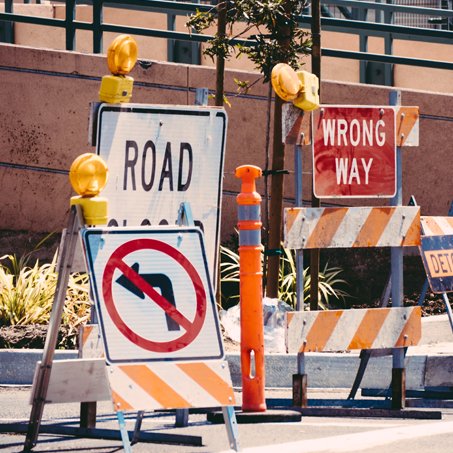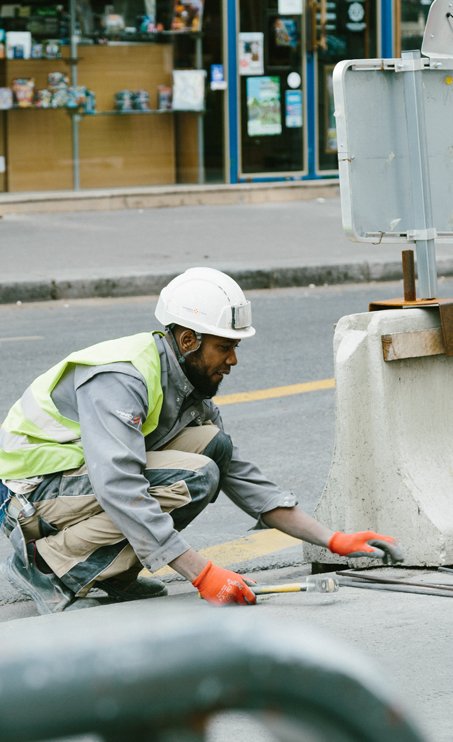Traffic Cones 101: Everything You Need to Know
The use of traffic cones is essential for maintaining traffic safety. On roads, bridges and building sites, these bright orange cones are frequently seen. They are incredibly noticeable and useful for directing and diverting traffic because of their vivid colours and unusual design.
Everything you need to know about traffic cones, from their fundamental features to their diverse applications, will be covered in this article.
What are Traffic Cones?
Traffic cones, also known as pylons, road cones, or safety cones, are those orange and white (or yellow and white) cone-shaped objects you see on roads. They are temporary markers used to safely direct traffic flow.
Road safety cones are typically made of bright plastic so they are easy to see, and they often have reflective stripes to make them more visible at night. They are also designed to be lightweight and easy to move, so they can be quickly deployed and repositioned as needed.
The Basics of Traffic Cones
Shape, Size, and Material:
Conical in shape, traffic cones have a wide base and a tiny top. This form provides stability and makes it simple to stack the cones for storage and transit. The most typical heights of traffic cones are between 12 and 36 inches. Larger cones are utilised in high-speed or high-visibility settings, while smaller cones are often used in temporary or low-impact situations.
Rubber or PVC (polyvinyl chloride) are two common materials used to make traffic cones. Due to the robustness of these materials, the cones can resist the impact of moving automobiles without shattering or suffering serious harm. The cones’ elasticity lowers the possibility of injury in the event of a collision and enables them to reshape themselves.
Colors and Significance:
The primary characteristic of traffic cones is their vivid orange colour, which makes them visible from a distance. The cones are clearly visible both during the day and at night because of the vivid orange colour, which shines out against the majority of backgrounds. Drivers are made aware of any regions that call for extra vigilance and of any changes in traffic patterns or road conditions thanks to the high visibility.
Other colours, each with a particular function, may also be included on traffic cones in addition to orange:
Green Lime: Traffic cones in the colour lime green are frequently used to mark pedestrian access points, such as trails or walkways close to construction projects. They identify authorised walking areas and aid in directing pedestrians safely around construction zones.
Yellow: Yellow traffic cones are frequently used to alert motorists about impending hazards or changes to the road, such as lane closures, traffic merging, or brief detours.
Red: Red safety cones are used to mark areas that are completely off-limits or that pose a serious threat. They frequently appear in fire lanes, no-entry areas, or places where active building or maintenance work is occurring.
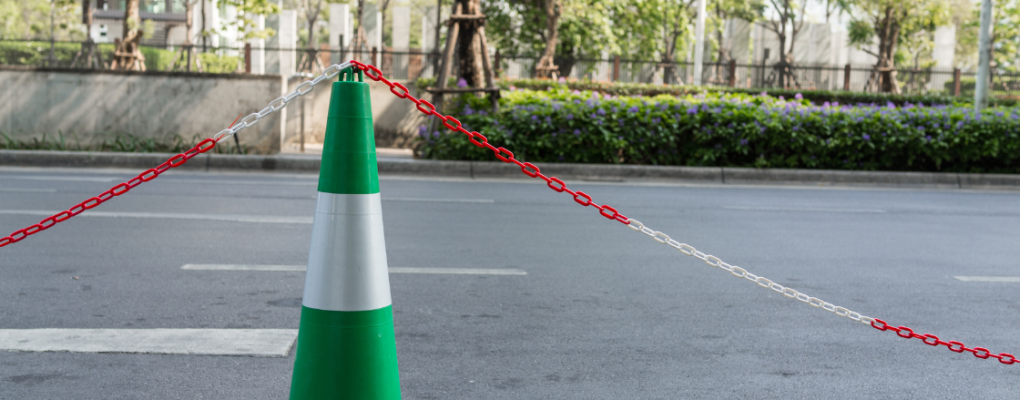
Types of Traffic Cones
There are different types of traffic cones, each created to meet particular requirements and circumstances. It can be easier to choose the best traffic cone for a given situation if you are aware of the various varieties of traffic cones and their unique applications. Here are a few typical varieties of traffic cones:
Typical Cones:
The most popular kind of traffic cones are standard ones. They normally come in sizes ranging from 12 to 36 inches in height and are composed of PVC or rubber. These cones are portable and lightweight, making them simple to move about and set up. Standard cones are mostly used for general traffic management, identifying construction zones, rerouting traffic, and giving drivers unambiguous instructions.
Benefits:
- High visibility: Regular traffic cones are frequently painted a bright orange color, ensuring excellent visibility both during the day and at night.
- Flexibility: Because of their design, they are able to tolerate slight hits from moving vehicles, which lowers the possibility of damage or harm.
- Conical-shaped standard cones can easily be stacked, which makes them practical for storage and transportation.
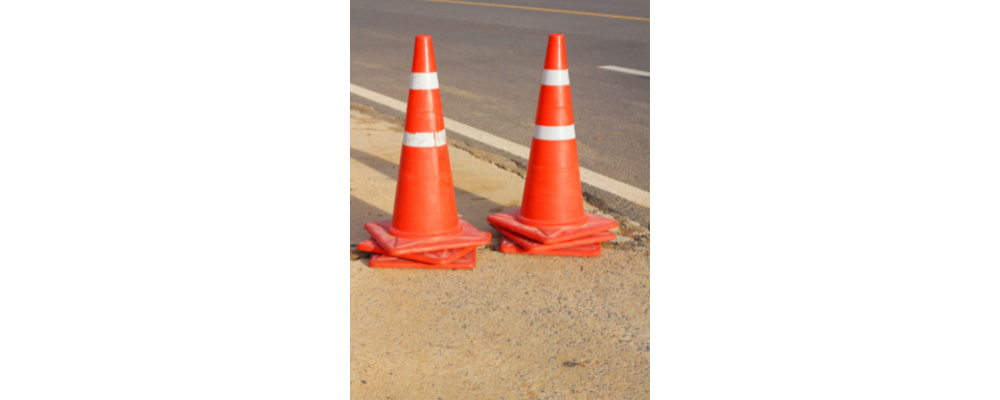
Collapsible Cones
Pop-up cones, commonly referred to as collapsible traffic cones, are lightweight and incredibly portable. These cones have a foldable construction with an internal spring and are made of sturdy materials like nylon or polyester fabric. They can be readily folded down into a flat, transportable form and are normally traffic cone height between 12 and 28 inches.
Benefits:
- Portability: Collapsible cones are light and portable, making them ideal for use in cars or storage containers. They are useful for temporary use or emergency scenarios thanks to their compact form.
- Quick deployment: By simply pulling them apart and locking them in place, these cones may be set up quickly.
- Visibility: Reflective bands or strips are frequently used on collapsible cones, which improves their visibility in low light.
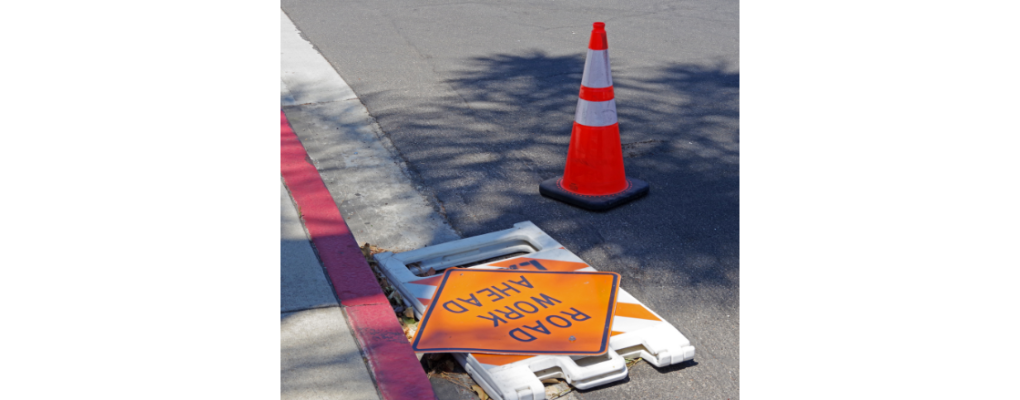
Weighted Cones:
In locations subject to severe winds or high-speed traffic, weighted traffic cones are designed to boost stability and wind resistance, ensuring they stay in place. These cones are composed of rubber or PVC and have a typical conical shape, but they also include a weighted base.
Benefits:
- Stability: Even in inclement weather or busy regions, the cones remain firmly in place because to the weighted base.
- Durability: The additional weight improves the cone’s overall toughness, making it more impact-resistant and less likely to topple over.
- Weighted cones are versatile and can be utilised in a variety of settings, such as parking lots, construction zones, and areas where there is a lot of foot activity.

LED Cones:
Traffic cones with LED lights integrated into the design improve visibility and call attention to particular places. The LED lights integrated inside these traffic cones are normally powered by batteries and are typically composed of sturdy materials like PVC. Different-sized LED cones are available, and they can be configured to emit either steady or flashing lights.
Benefits:
- Enhanced visibility: The LED lights make these cones highly visible, especially during nighttime or low-light conditions.
- Attention-grabbing: The flashing lights attract attention and alert drivers to potential hazards or changes on the road.
- Long-lasting: LED cones often come with energy-efficient LED lights that have a long battery life, ensuring extended use before needing replacement.
Cone Bars:
Cone bars are add-ons that can be used with traffic cones to define certain zones or erect a physical barrier. They are made of flexible bars with fluorescent stripes that fit into the top holes of various cones to join them and create a boundary or barrier. Cone bars are frequently utilised in parking lots, construction zones, and other places where transient barriers are required.
Benefits:
- Versatility: Temporary barriers can be quickly and easily built up using cone bars, which are simply affixed to regular cones. Cone bars’ reflective stripes help to increase visibility, especially at night or in low light.
- Expandability: To build longer barriers or outline larger areas, several cones can be joined by cone bars.
- Each type of traffic cone has a specific function, and choosing the right one depends on the location, the volume of traffic, and any potential hazards. You can choose wisely to ensure the best traffic control and safety in a variety of road-related conditions by learning the features and advantages of various cone kinds.
Where the Traffic Safety Cone Uses?
Traffic cones are used for traffic management, marking construction zones, controlling crowds at events, enhancing road safety by alerting drivers to hazards, guiding parking, and designating safe areas during emergencies and utility work. They are also used in sports training as markers.
Road Construction and Maintenance:
Traffic cones are essential equipment for establishing safe work zones and directing traffic during road construction and maintenance projects. They accomplish the following goals:
Traffic Cones: Traffic cones are positioned carefully to temporarily reroute traffic or to turn vehicles away from construction zones. Cones aid in preventing accidents and ensuring a smooth flow of traffic by clearly delineating lanes and announcing changes in traffic patterns.
Construction sites frequently contain potential risks like open trenches, uneven ground, or unsecured debris. Traffic cones are used to clearly highlight these dangers and warn oncoming traffic to drive carefully. They serve as a visual barrier to keep moving traffic away from potentially hazardous regions.
Traffic Control and Safety:
Traffic cones play a vital role in managing traffic flow, maintaining road safety, and preventing accidents. Their applications in traffic control and safety include:
Traffic cones are used to direct cars by marking lanes, signalling changes in the alignment of the road, or directing traffic through detours. They aid in preserving order and reducing confusion, especially in regions where temporary changes to road layouts have been made.
Cones are frequently used to indicate lanes on roads and highways. They help drivers maintain proper placement and stop lane drifting, lowering the danger of crashes, by clearly distinguishing lanes.
Traffic cones are used to alert drivers of road closures and reroute them to alternate routes when roads need to be blocked or detoured because of collisions, construction, or special events. They contribute to preserving a steady stream of traffic while reducing hiccups.
Events and Parking Management:
During events, concerts, or huge crowds, traffic cones are essential for controlling both traffic and parking. Their use in parking and event management includes:
Creating Designated zones: Parking, drop-off, and pick-up zones are designated using cones. They aid in streamlining traffic and ensuring that cars are sent in the right direction.
Cones are strategically positioned to mark entrances and exits, directing traffic and people to the appropriate places of entry or exit. This guarantees a managed and efficient flow of traffic throughout events.
Managing Traffic: In parking lots or at events, traffic cones are used to control the flow of vehicles. They help to make lanes, guide cars to parking spots that are open, and stop traffic or unauthorised access to restricted areas.
Event planners can increase safety, boost traffic flow, and create a better overall experience for participants and visitors by utilising traffic cones in event and parking management.
Traffic cones are adaptable equipment that provide a significant contribution to traffic control, road safety, and the effective completion of numerous tasks. For drivers, pedestrians, and employees alike, understanding how to use them and employing them responsibly can help create safer workplaces.

Proper Usage and Maintenance
- Setting Up Traffic Cones: It is crucial to adhere to the recommended placement recommendations in order to achieve the greatest effectiveness of traffic cones. Here are detailed directions for placing traffic cones correctly:
- Examine the area: To establish the right number of cones and their perfect placement, evaluate the road or work zone. Take into account elements including the size of the work zone, the amount of traffic, and any potential dangers.
- Establish Cone Spacing: Traffic cone visibility and driver guidance depend greatly on the distance between them. Cones should be positioned roughly 10 to 12 feet apart as a general guideline. To ensure that drivers have enough direction, however, modify the spacing according on the unique situation, such as greater speeds or complicated road designs.
- Gradual Tapering: It’s crucial to use cones to gradually reduce their size while delineating a lane closure or lane shift. As vehicles approach the work zone, start placing the cones closely together and gradually widen the distance between them. Drivers can more easily adapt to the new traffic pattern because to its steady taper.
- Positioning for Visibility: Position traffic cones to give them the best possible view. Cones should be placed for daytime use so that they stand out against the background. Cones should be outfitted with reflective materials or lights to improve visibility in poor light or at night.
- Think about Traffic Flow Depending on the planned traffic flow, decide where the cones should be placed.
Safety Guidelines:
To reduce the danger of accidents, working with traffic cones requires attention to safety regulations. Here are some crucial safety advice:
Equipment for personal protection (PPE): When working with traffic cones, always put on the proper PPE, such as high-visibility clothing, gloves, and safety boots. PPE improves visibility and personal safety, which lowers the risk of accidents.
Training in traffic control is necessary for staff members who are in charge of erecting and maintaining traffic cones. The safe handling of traffic cones and efficient traffic management are made possible by understanding traffic control procedures, safety protocols, and signalling strategies.
Traffic Observation: Always be on the lookout for nearby traffic and potential dangers. The danger of accidents can be reduced by remaining vigilant and keeping a safe distance from moving cars.
Maintenance and Storage:
Proper maintenance and storage of traffic cones are essential for their longevity and effectiveness. Follow these tips:
Cleaning on a Regular Basis: Clear traffic cones of any dirt, debris, or other items that might impair their visibility or functionality on a regular basis. Avoid using harsh chemicals that can harm the cone material when cleaning the cones; instead, use mild soap and water.
Check for Damage: Consistently look for evidence of damage, such as cracks, tears, or abnormalities, on the traffic cones. Damaged cones should be replaced right away since they might not offer the stability or visibility that is required.
Storage of traffic cones should be done properly to avoid damage and extend their life. To preserve their shape and shield them from extreme heat or direct sunshine, which can lead to material deterioration, stack the cones upright.
Fun Facts and Trivia about Traffic Cones
- Guinness World Record: The tallest traffic cone on record stands at an impressive 13.1 meters (43 feet) tall. It was created in the United Kingdom to commemorate the 2012 London Olympic Games.
- Alternative Names: Traffic cones are known by various names around the world. In the United Kingdom, they are often referred to as “traffic bollards” or “witch’s hats.” In Australia and New Zealand, they are commonly called “witches’ hats” due to their resemblance to the iconic headwear.
- Traffic Cone Art: Traffic cones have been embraced by artists and have become a medium for creative expression. In various cities, you can find sculptures and installations made from traffic cones, adding a unique touch to public spaces.
- Cone Olympics: In some countries, there are annual events known as “Cone Olympics” where participants compete in cone-related activities, such as cone stacking and cone slalom races. These events bring together enthusiasts who appreciate the versatility of traffic cones.
- Traffic cones have appeared in movies and in popular culture. They can be seen in comic or playful roles in films like “Toy Story” and “Minions,” where they are frequently treated as characters.
- It may surprise you to learn that there are collectors that focus exclusively on collecting traffic cones. To add to their collections, some collectors are on the lookout for unusual or distinctive cones from other nations or eras.
- Popular culture icon: Road work and construction are frequently depicted with traffic cones. It now serves as a metaphor for momentary discomfort and a warning to drivers to drive carefully.
Conclusion
By rerouting traffic, identifying risks, and designating work zones during road construction and maintenance projects, traffic cones play a critical part in enhancing road safety.
Traffic cones should be cleaned, checked for damage, and stored upright in a clean, dry area on a regular basis in order to ensure their effectiveness and longevity. Road safety and traffic management are greatly aided by traffic cones. We can assure their efficacy and help to create safer driving environments for everyone by adhering to correct usage and safety rules.
Remember that it’s crucial to respect traffic cones’ presence and adhere to their instructions whether you come across them during road construction, at events, or in parking lots. All road users will be safer on our roads if we work together.
Keep yourself educated, exercise caution, and let’s continue to put traffic cones in front of road safety
The weight of a traffic cone typically varies depending on its size and design. Standard traffic cones generally weigh between 3 to 7 pounds (1.4 to 3.2 kg). Heavier, more stable cones designed for highway or construction use can weigh up to 10 pounds (4.5 kg) or more.
Traffic cones come in various heights, typically ranging from 12 inches (30 cm) to 36 inches (91 cm). The most commonly used traffic cones are 18 inches (45 cm) or 28 inches (71 cm) tall, with larger cones, like the 36-inch ones, often used in areas requiring higher visibility, such as highways.
Traffic cones are cone-shaped for several practical reasons. The conical design provides stability, ensuring that they remain upright even in windy conditions or when lightly bumped. The wide base helps prevent tipping, while the tapering shape makes them stackable for easy storage and transport. Additionally, the cone shape maximizes visibility from all angles, making them effective for directing traffic and marking hazards.



